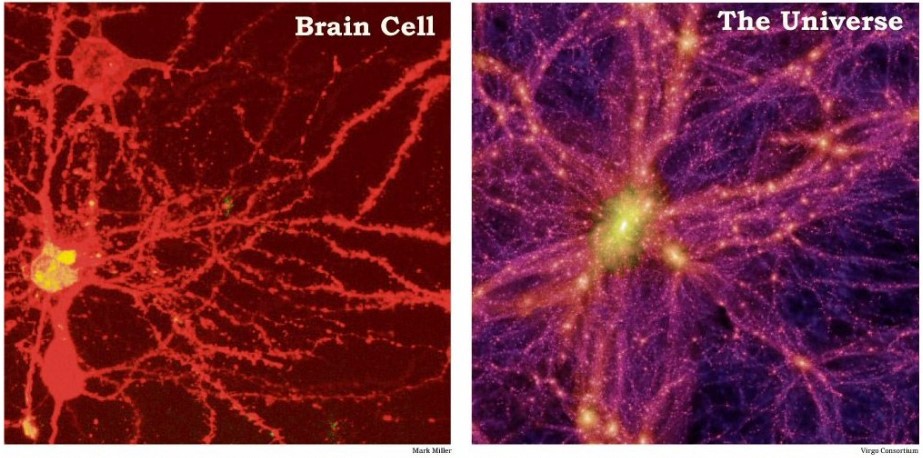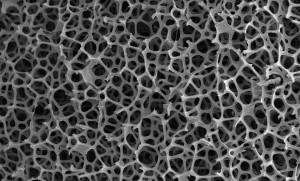
This image comparing the similarity between our brain cells and the Universe did many rounds on the Internet and we all were quite amazed at this too. The mere hint that our brain cells exactly resemble the universe is fascinating enough. But does this hold any truth? Let?s find out!
When an international group of astrophysicists used a computer simulation last year to recreate how the universe grew and evolved, it looked like the image shown on the right. The simulation image is a snapshot of the present universes that features a large cluster of galaxies (bright yellow) surrounded by thousands of stars, galaxies, and dark matter. The study shows it in the following manner.
Originally published on Skit Hub
Here we show that the causal network representing the large-scale structure of spacetime in our accelerating universe is a power-law graph with strong clustering, similar to many complex networks such as the internet, social, or biological networks. We prove that this structural similarity is a consequence of the asymptotic equivalence between the large-scale growth dynamics of complex networks and causal networks.
The image on the left, on the other hand, shows brain cells which are a microscopic photo of a few neurons. And then people launch into some philosophical theories based on this superficial resemblance ? that the universe is a cell in some bigger life-form and how entire how the mind can be related to the universe.
The problem is that this is an entirely superficial resemblance. By ?superficial? I mean that the more you look at the details, the less these phenomena resemble each other.
It doesn?t necessarily resemble, It could be because of Apophenia.
The universe?s similarity to the brain cell could be attributed to Apophenia. It is the experience of perceiving patterns or connections even in random or meaningless data. So, It?s our mind which perceives tiny details and joins them together to come up with a conclusion like these. And it?s not just brain cells and universe. Take a look at these images, for instance:


The image on the left represents a sponge under a microscope and the image on the right represents the large-scale filamentary structure of the universe. Would you still say our brain and its neurons resemble the universe? It?s a typical kind of optical illusion that makes us see slightest of resemblance in perpetually opposite things.
However, this similarity is not completely worthless either. The spiral structure of a galaxy and the spiral structure of a hurricane are both at least indirectly a result of differential rotation (i.e. stuff orbits at different angular velocities at different radii). We see things in space that look like ?bubbles?, and they are indeed somewhat related to bubbles on Earth: they are regions inflated by pressure. The interstellar medium is also full of turbulence. We see the wave-shapes of the Kelvin-Helmholtz instability on Earth and on Jupiter.
So what is it? Are they similar?
The conclusion we can derive is that we humans have this distinct ability to recognize visual patterns and this is a very important tool too, but cannot be taken very seriously for all perspectives. It?s important we get into more detail about the design before deriving conclusions just based on what we see.
Citation:
Reddit Thread

